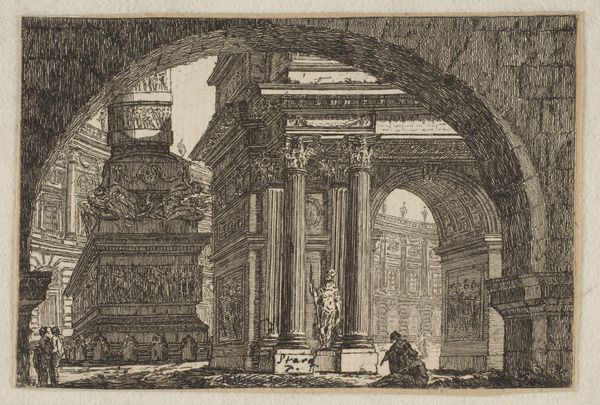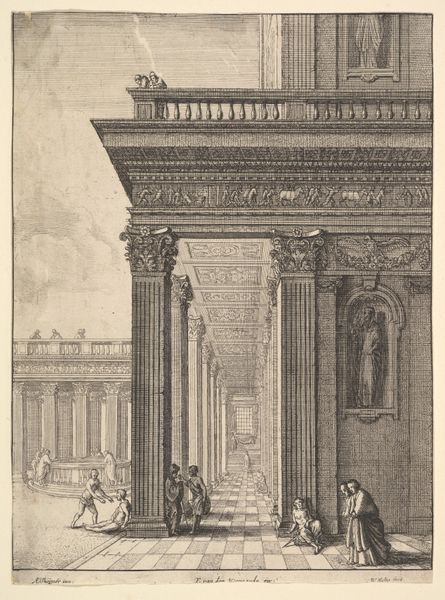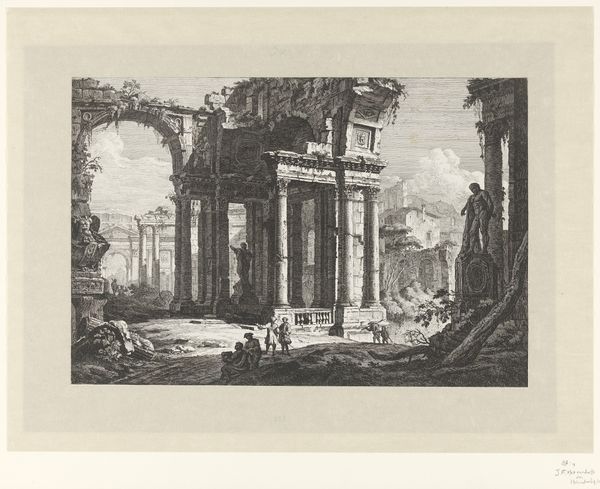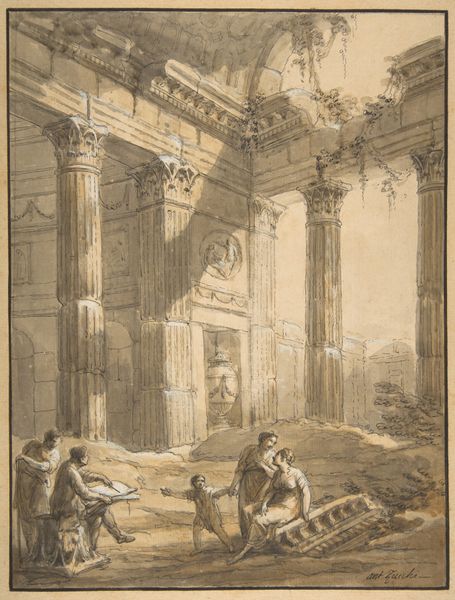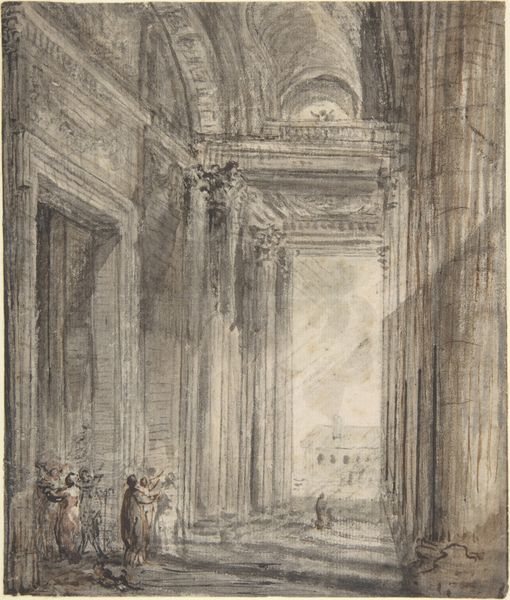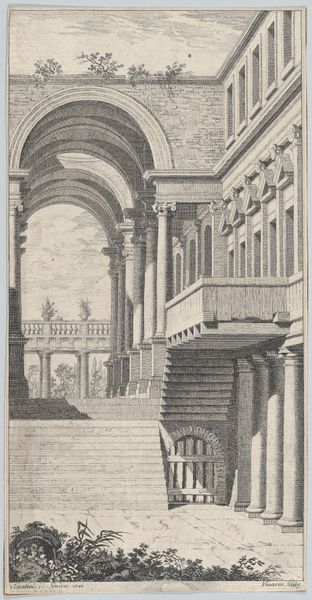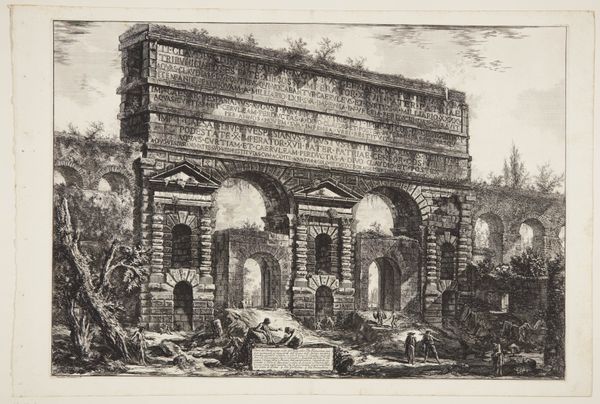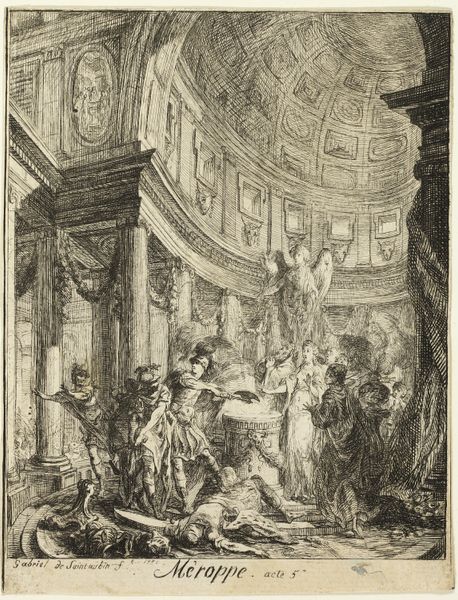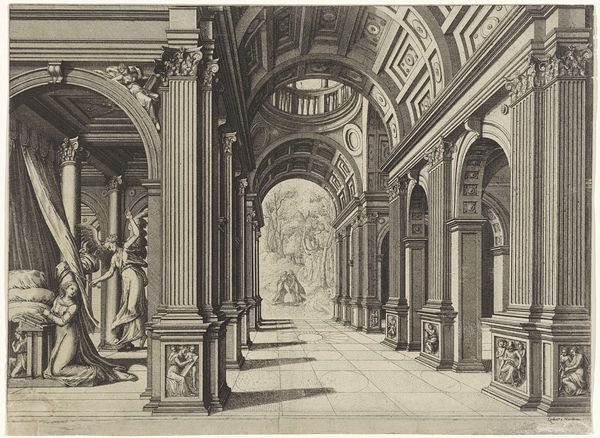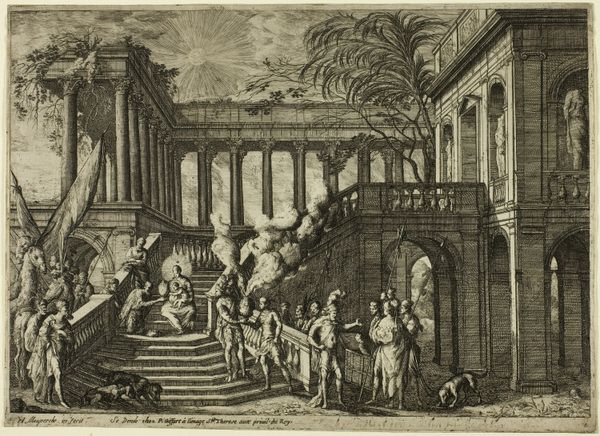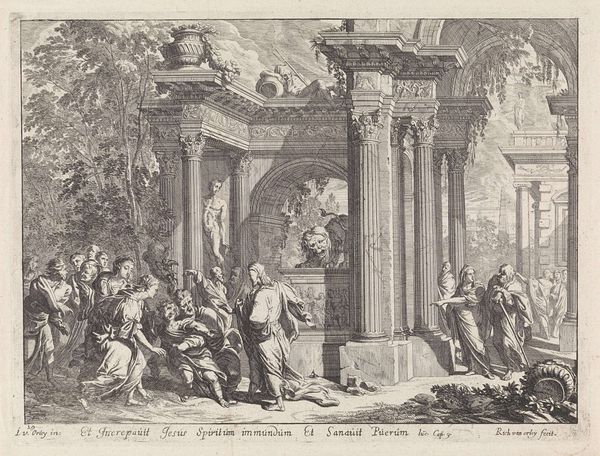
print, engraving
#
baroque
# print
#
figuration
#
form
#
line
#
cityscape
#
history-painting
#
engraving
Dimensions: plate: 13.2 x 19.7 cm (5 3/16 x 7 3/4 in.) sheet: 23.8 x 31.5 cm (9 3/8 x 12 3/8 in.)
Copyright: National Gallery of Art: CC0 1.0
Editor: Here we have Pierre Moreau’s print, "Funeral Scene in Imaginary Architecture," made using engraving techniques. The scene has a definite solemn mood, enhanced by the contrast between the intricate architectural elements and the somber procession. What stories do you think this piece might be telling? Curator: Well, first note how the architecture itself—these grandiose, almost theatrical arches and columns—functions as a stage for human drama. Observe the figures carrying the deceased. They become part of a carefully constructed narrative. Do you notice how the linear perspective directs our eyes, not just into the pictorial space, but towards an idea of the eternal, signified by that classical architecture? Editor: I do see that. It's interesting that the figures seem relatively small in comparison to the overwhelming size of the building. Curator: Exactly! Consider the inscription 'D.O.M.' visible on the plinth to the left: *Deo Optimo Maximo*, dedicating the scene to God, the greatest and best. It speaks to a cultural memory, connecting earthly mortality with a desire for heavenly transcendence. Notice also how Moreau, although presenting an imagined scene, relies on the visual language of real Roman monuments. How does that inform your understanding? Editor: So, it’s like he's tapping into this collective understanding of history and grandeur to elevate the funeral scene? It really connects to this sense of cultural continuity... Curator: Precisely. The image becomes a site where the viewer contemplates not just death, but also the enduring power of cultural symbols across time. What remains with you after encountering such an image? Editor: Definitely the blend of personal sorrow within this massive, historical, almost timeless framework. It’s something to ponder. Curator: Indeed. These visual echoes allow us to perceive our own experiences as part of something much larger.
Comments
No comments
Be the first to comment and join the conversation on the ultimate creative platform.
